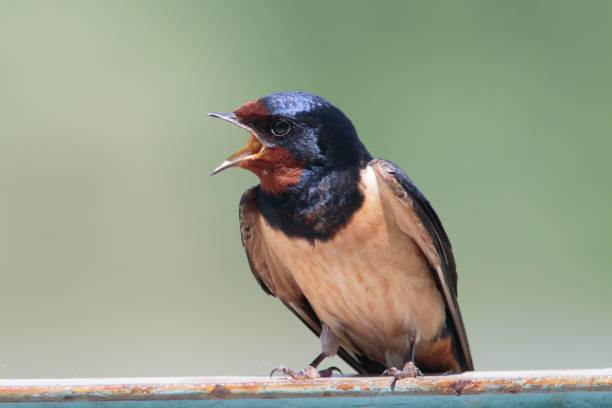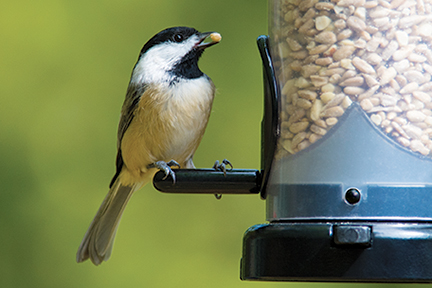
Bird of the Month: Barn Swallow
Barn Swallows are graceful birds that dart over fields, barnyards and open water searching for flying insect prey. The male is glistening cobalt blue above and rufous to tawny buff on the underparts. The blue crown and face contrast with the striking cinnamon-colored forehead and throat. The female is similar but not as brightly colored.
Barn Swallows are found throughout North America foraging in open fields, parks, beaches and over open water such as lakes, ponds and coastal waters. They range from sea level to 10,000 feet.
Barn Swallows eat all kinds of flying critters including beetles, bees, wasps, ants, butterflies, moths, mosquitoes and gnats. One Barn Swallow can eat 60 insects per hour or up to 850 in a day. That's approximately 25,000 less bugs a month pestering you at your BBQ! They will also ingest grit and small pebbles, or eggshells and oyster shells set out by humans, which may help with digestion or add needed calcium to the diet.
Both the male and female Barn Swallow build the nest cup using mud mixed with grass stems. The nest is lined first with grass, then feathers. Preferred sites include eaves, rafters, cross beams of barns, sheds and stables and the undersides of bridges, wharfs and culverts. Old nests may be reused but they avoid those infested with mites or other parasites. The female will lay 3 - 7 creamy or pinkish eggs that are dotted with brown, lavender and gray. The eggs will hatch in 12 - 17 days and the babies will fledge between 15 - 27 days later. A pair may have two broods.
The Barn Swallow is the most abundant and widely distributed swallow species in the world. It breeds throughout the Northern Hemisphere and winters in the Southern Hemisphere.
Barn Swallows once nested in caves but now build their nests almost exclusively on human-made structures. The only North American Barn Swallow today that still regularly uses caves as nest sites occurs in the Channel Islands off the California coast.
Barn Swallow parents have helpers that assist them in feeding their young. These helpers are usually older siblings from previous clutches but can be unrelated juveniles as well.
According to legend, the Barn Swallow got its forked tail because it stole fire from the gods to bring to people. An angry deity hurled a firebrand at the swallow burning away its middle tail feathers.
The oldest known Barn Swallow in North America was at least 10 years old when it was captured and rereleased during a banding operation in Maryland.

